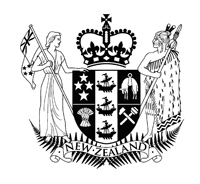Hon Amy AdamsMinister for Communications |
 |
| 29 January 2015 |
Media statement |
Major school broadband project completedSchools nationwide are all able to connect to fast, reliable broadband, Communications Minister Amy Adams announced today. “With the new term starting next week, teachers, parents and students across the country will be delighted to hear that all schools can now connect to the information superhighway that is our Government-funded broadband network,” Ms Adams says. “We set ourselves a challenge in 2010 to give all state and state-integrated schools access to better broadband speeds by 2016. We’ve done this – on time and within budget.” Around 782,000 students from almost 2500 schools have had fibre laid to their school gate under the Ultra-Fast Broadband (UFB) and Rural Broadband Initiative (RBI) programmes. “Just in time for Term One, 97 per cent of schools covering 99.7 per cent of students are now able to connect to Ultra-Fast Broadband. “The remaining three per cent of schools are our most remote, and they too have greatly improved broadband delivered via wireless connections,” Ms Adams says. “This Government wants our schools to be among the most connected in the world and getting them connected to fast, reliable broadband is a key milestone in achieving this.” Ms Adams says schools were given priority in the rollout and have been leaders in terms of choosing to connect to fast broadband and learning how to make the most of it. The first sod was turned in the UFB initiative at Manaia View School in Whangarei in December 2010. The final school connected was Kaitieke School in Owhango, in the Ruapehu district. “Since then, schools have actively sought Ultra-Fast Broadband connections. When combined with the thirst for professional development and skills for 21st century teaching and learning, schools are really maximising the use and potential this world-class technology brings,” Ms Adams says. According to a 2012 study, faster and more reliable broadband speeds will reduce the cost of course materials and save on field trips. The result is a $3.6 billion consumer surplus over 20 years. There are likely to be 25 million fewer days of missed school due to sickness and truancy, by using remote learning applications and better collaboration between parents and teachers. “The benefits of rolling out broadband to schools is wide-ranging, and part of the National-led Government’s plan to deliver world-class education to our youngest New Zealanders.” Some 90 per cent of schools have also already connected to the Government’s managed Network for Learning, which ensures schools have equitable access to safe, predictable and fast internet with uncapped data, as well as high quality teaching and learning resources. Attached: Database of schools able to connect by regional breakdown Media contact: Julian Light 021 243 8528 or Lauren Wallis 021 918 329 Note to editor: The Government committed to rolling out UFB (peak speeds of at least 100Mpbs) to 97 per cent of schools by 2016. It relates to all state and state-integrated schools built before December 2011. Schools built after this date receive UFB as part of their build programme. Schools with multiple sites have been counted as a single school (but not all sites might be connected). State and state-integrated schools have been able to connect to the network for free but private schools pay to connect to the fibre on their boundary. The remaining three per cent of schools are covered by the Remote Schools Broadband Initiative and receive faster broadband (10Mbps or more) via point-to-point wireless or satellite technology. |
|